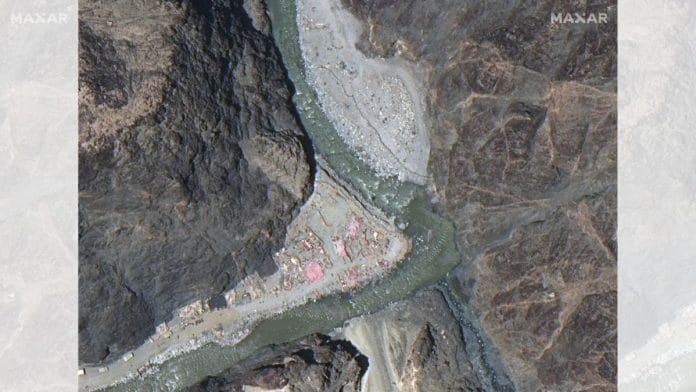New Delhi: Indian and Chinese troops Tuesday started disengaging in small batches and removing self-created blockades at Depsang and Demchok in eastern Ladakh, according to the schedule agreed to Monday, ThePrint has learnt.
Sources in the defence and security establishment told ThePrint that, while the deal was negotiated at both diplomatic and military levels, the final agreement was signed by the senior highest military commander—the corps commander—on the Indian side at about 4.30 am Monday.
It was after this that Foreign Secretary Vikram Misri announced that both countries had reached an understanding to disengage and resume patrolling.
Also, graziers will now be allowed to graze their cattle in areas that were earlier declared as buffer zones, but this will be coordinated.
Sources said that the disengagement process at Depsang started Wednesday. “It is happening as per agreed terms in terms of the percentage of what has to be dismantled and when troops have to be pulled back,” a source said.
The pace of the disengagement in Demchok was not immediately clear, but sources had earlier said that at least one tent had been removed earlier.
Expanding on the agreement between India and China, sources said it allows for patrolling to be restarted at all Patrolling Points (PP) the two sides used in April 2020 before the tensions began.
This involves patrolling not just in Depsang and Demchok but also along the northern banks of Pangong Tso, in the Gogra Hot Springs area, and in the Galwan Valley.
However, it is not immediately known when this patrol will resume. Incidentally, patrolling in these areas is not conducted during the winter because of a severe drop in temperatures and heavy snow.
What patrolling will entail
According to the understanding, sources said, patrolling will be carried out in all areas as it was before 2020, with the only exception being Depsang and Demchok.
For example, on the northern banks of Pangong Tso, while India’s claim line is till Finger 8, the actual patrolling used to be carried out till Finger 4.
Chinese troops used to block Indian passage from Finger 4 to 5 and beyond. Way back in 2020, an Indian Army team had managed to reach Finger 6 through a different route, which the Chinese had objected to.
In the Galwan area, Indian troops used to patrol mainly only till PP14, which is near the Y-junction in the valley. The Y-junction is the area where the Galwan River makes a sharp turn towards its meeting point with the Shyok River.
Sources said that this point is about 1.5 kilometres short of the Line of Actual Control (LAC), from where PP14A is 500 metres short.
Indian soldiers have to cross through the strong current of the river by foot to go up to PP14A, which, sources said, was usually undertaken by two soldiers since the track ahead was narrow. They had a small stone structure from where they used to observe and return. The Chinese found it more difficult to reach PP14 because of the flow of the river and the terrain on their side.
In 2020, tensions began in the Galwan Valley after India constructed a small foot overbridge over the river, which allowed troops to cross over easily and would have made it easier to patrol up to PP14A.
The Chinese objected to this construction. Sources said that, in the Galwan Valley, the patrolling will take place till place till PP14 on the Indian side, which, incidentally, became part of the buffer zone after troops disengaged in 2020 after the clashes.
In Depsang, patrolling to go back to pre-2017 status
In the case of Depsang, sources said, Indian troops will be allowed to patrol all the points—PP10-PP13—as first reported by ThePrint Monday.
This, the sources said, was a critical forward movement because the Chinese have blocked India from the so-called ‘bottleneck’ area since 2020. This had forced Indian troops to patrol on foot because there was no space for the movement of a vehicle.
However, since 2017, Chinese troops have blocked Indian troops after they crossed the ‘bottleneck’ area and reached the Y-junction area. It’s called the Y-junction because two roads lead to various patrolling points.
“The agreement now allows patrolling to all PP even though they were largely blocked since 2017 when the Doklam standoff began,” a second source said.
There were never any no-go areas but the Chinese had built a road and set up cameras. Often, they would come in vehicles and block Indian troops from going ahead to various PPs.
As first reported by ThePrint in August 2020, the Depsang tensions predate the current stand-off.
Patrolling will be conducted twice a month and the strength for this exercise has been fixed at 15 personnel to avoid clashes. Both sides have also agreed to coordinate with each other before embarking on patrolling along the LAC. This means that each side will inform the other before embarking on a patrol.
No new construction in areas identified
Speaking about other aspects of the agreement, sources said that no new construction will be undertaken by either side in areas that were declared buffer zones earlier.
“Both sides are free to carry out any kind of infrastructure development but not in the buffer zone areas or where the patrolling happened. This means no new roads or temporary bridges,” the second source said.
This means that India won’t be constructing anything like the foot overbridge near PP14, and nor will the Chinese build any new structures on their side within the buffer zone, which falls on both sides.
(Edited by Sanya Mathur)
Also Read: ‘Can’t have standoff at border and negotiate in the next room,’ says Jaishankar on India-China ties






